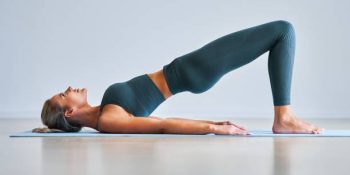
How Can Exercise Improve your Osteoarthritis?
December 4, 2019
Osteoarthritis is a painful, debilitating condition that can affect your quality of life and prevent you from doing the things you enjoy. For many exercising can seem like a daunting task, especially if you are worried that you will worsen your symptoms and cause more pain. However, exercise doesn’t mean going for a run or grinding it out at your Bodyblast class that makes you feel worse than before. Exercise that is tailored to you and specifically manages your arthritis allows you to continue doing what you enjoy by making you stronger, fitter and reducing risk factors such as Cardiovascular Disease, Stroke and Type 2 Diabetes.
How can Exercise Help Me?
Exercise performed correctly will help:
- Reduce stiffness associated with arthritis
- Strengthen the muscles around the joint with resistance exercise to make you stronger and reduce pain levels.
- Manage or reduce weight by aerobic exercise that may be aggravating your joint pain.
- Improve your bone density through weight bearing and resistance exercise
- Enhance you wellbeing.
How Should I be Exercising?
It is important to ensure you are performing the correct type of exercise as performing too much, too soon, or, high impact exercises can cause more pain and make you want to stop all together. So here are some tips on how to exercise:
- Low to moderate Impact: Begin with low to moderate impact exercises that do not cause excessive stress upon a joint such as running or burpees. This can include swimming, cycling, walking, and resistance exercises.
- Don’t do too much too quickly: If you have not been exercising for a long time, it is important to not perform too much exercise too quickly, on order to prevent too much stress on the joints, which can lead to pain and stiffness. Beginning exercising a couple of times a week to begin with whether it’s going for a bike ride, or walk. Then slowly building each day. You will notice some muscle soreness when you begin exercising, however if you are experiencing more pain than you usually do in your joints, that last more than a few hours, or redness around the joint, you have done too much.
- Perform Exercise you enjoy as consistency is key: Being consistent with your exercise is key to ensure you continue to strengthen your muscles, become fitter and healthier. To continue to exercise it is crucial to find exercises or activities you enjoy, as you won’t continue to exercise if you are not enjoying what you’re doing. You can exercise with a friend or join a group to make it more engaging.
- Warm up with gentle exercises: A 5 to 10 minute warm up performing gentle exercise such as light cycling, easy walking or range of motion exercises can reduce stiffness and warm the joint prior to exercise.
If you are unsure regarding the best way for you to exercise it is a fantastic idea to see an Exercise Physiologist you can create a tailored program for you that ensures you are performing the correct exercises at the right intensity to best manage your arthritis.
Written by Rebecca Badman
Accredited Exercise Physiologist
Other News
Why Runners should do Pilates
Why runners should do Pilates? Simple, it will make you a better run...
June 23, 2023
Managing POTS through exercise
Struggling with exercise since being diagnosed with POTS? This one’s for ...
April 24, 2023
Exercise in Stroke Rehabilitation!
Strokes occur when blood supply to your brain is stopped. This can be tempo...
March 10, 2023







